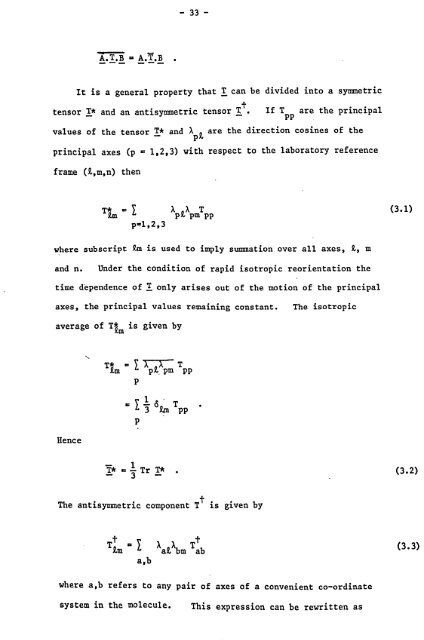NNR IN RAPIDLY ROTATED METALS By - Nottingham eTheses ...
NNR IN RAPIDLY ROTATED METALS By - Nottingham eTheses ...
NNR IN RAPIDLY ROTATED METALS By - Nottingham eTheses ...
Create successful ePaper yourself
Turn your PDF publications into a flip-book with our unique Google optimized e-Paper software.
Aý T. B a A"T"B<br />
"<br />
- 33 -<br />
It is a general property that T can be divided into a symmetric<br />
tensor T* and an antisymmetric tensor T. If Tpp are the principal<br />
values of the tensor T* and apt are the direction cosines of the<br />
principal axes (p = 1,2,3) with respect to the laboratory reference<br />
frame (2., m, n) then<br />
where subscript<br />
TRm Lx<br />
p=1,2,3<br />
PýX PM PP<br />
Em is used to imply summation over all axes, 9, m<br />
and n. Under the condition of rapid isotropic reorientation the<br />
time dependence of 1 only arises out of the motion of the principal<br />
axes, the principal values remaining constant. The isotropic<br />
average of Tjm is given by<br />
Hence<br />
Tim cLPP<br />
P<br />
P<br />
T*a3TrT*<br />
TPP<br />
3a km TPP<br />
The antisymmetric component Tt is given by<br />
tach<br />
TIm<br />
(,<br />
a, b<br />
.<br />
fi<br />
7ý<br />
at bm Tab<br />
where a, b refers to any pair of axes of a convenient co-ordinate<br />
system in the molecule. This expression can be rewritten as<br />
(3.1)<br />
(3.2)<br />
(3.3)

















